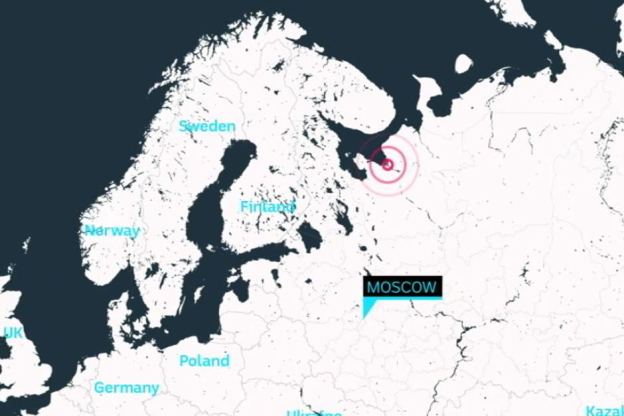Two days after the explosion of a suspected nuclear-powered cruise missile undergoing testing on Aug. 8, 2010 near Nyonoksa Russia, two monitoring stations nearest the site of the accident stopped transmitting data, Lassina Zerbo, who heads the Comprehensive Nuclear Test Ban Treaty Organization, told The Wall Street Journal. The Russian monitoring stations, called Dubna and Kirov after the places where they are located, were contacted immediately about the data disruptionl, and Russian officials responded that they were experiencing “communication & network issues.”
The missile test, on a platform in Dvinsk Bay on the White Sea in northwest Russia, has been the subject of considerable speculation. President Trump has said it involved an advanced nuclear-powered cruise missile, which has been dubbed Skyfall by the North Atlantic Treaty Organization, and which Russia calls Burevestnik.
The manned monitoring stations are part of an international network of hundreds of stations set up to verify compliance with the Comprehensive Nuclear Test Ban Treaty, which prohibits nuclear weapons tests globally. Participating nations are responsible for running the stations…The stations are designed to monitor everything from seismic shifts to sound waves for signs of nuclear activity. The two stations that went silent in Russia are designed to measure radioactive particles in the atmosphere…Arms-control experts said the monitoring problem appears to be a Russian effort to conceal information about the accident and not an effort to hide evidence of a prohibited nuclear weapons test.
Excerpts from Russian Nuclear Monitoring Stations Went Silent After Missile Blast, WSJ, Aug. 19, 2019

